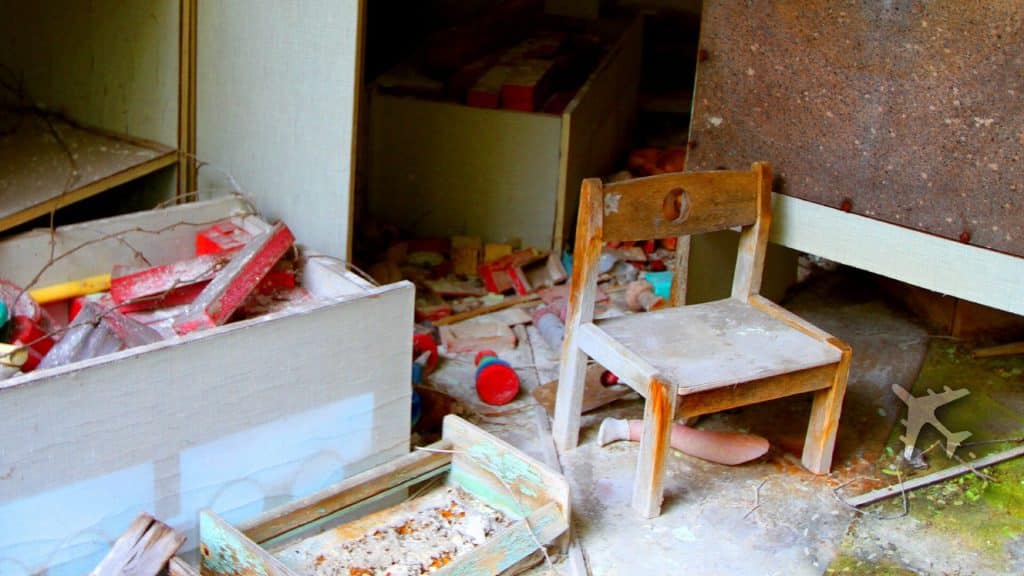The abandoned city of Pripyat lies in the heart of Ukraine, shrouded by a dense forest and an eerie silence. A ghost town of haunting beauty and chilling history, Pripyat stands as a stark reminder of one of humanity’s darkest disasters: the Chernobyl nuclear catastrophe. For dark tourism enthusiasts, this otherworldly city offers an unparalleled glimpse into a world left behind.
How It All Began
Pripyat was once a thriving Soviet city, established in 1970 to house the nearby Chernobyl Nuclear Power Plant workers. With a population of nearly 50,000, it boasted modern amenities for its time: schools, hospitals, a cultural palace, and even a Ferris wheel in the central amusement park, set to open for May Day celebrations in 1986. This bustling community embodied Soviet ideals and the promise of nuclear energy.

But everything changed on April 26, 1986. Reactor No. 4 at the Chernobyl plant exploded during a late-night safety test gone catastrophically wrong. The explosion released an unprecedented amount of radioactive material into the atmosphere and showered radioactive debris across the surrounding areas, marking it as the worst nuclear disaster in history. Within hours, the fate of Pripyat was sealed.
The Evacuation: A City Abandoned
Despite the catastrophic explosion, life in Pripyat continued for over 36 hours, as residents were kept in the dark about the scale of the disaster. It wasn’t until April 27 that the Soviet government ordered a complete evacuation. Over 1,200 buses arrived to transport residents, who were told to pack only essentials and that they would return in a few days. They never came back.

Today, personal belongings—toys, clothes, and even plates of uneaten food—still litter the decaying apartments, a haunting snapshot of life interrupted.
The Effects of Chernobyl
The Chernobyl explosion sent a radioactive plume across Europe, with Pripyat bearing the brunt of the fallout. Residents exposed to the radiation suffered immediate and long-term health effects, from acute radiation syndrome to increased cancer rates. The city itself became an exclusion zone, uninhabitable for thousands of years.
Nature, however, has thrived in humanity’s absence. Wildlife, including wolves, bears, and lynx, roam freely, and if lucky, you may get to see the star of Chornobyl, “Simon the Fox.”

Pripyat Today: A Destination for the Brave
Pripyat and the Chernobyl Exclusion Zone have become an unexpected magnet for dark tourism. Guided tours allow visitors to explore this frozen city, where time stopped in 1986. Among the most striking sights are the rusting Ferris wheel, the crumbling hospital, and the abandoned swimming pool, each a symbol of lives abruptly halted.
Visitors must adhere to strict safety protocols, as radiation hotspots still exist. Guides equipped with Geiger counters navigate the eeriest corners while sharing haunting tales of the past. For travelers seeking a deeper connection to history and the fragility of human achievement, Pripyat offers an experience like no other.
Why Visit?
Pripyat is more than a ghost town; it’s a testament to the hubris of humanity and the resilience of nature. Walking through its deserted streets feels like stepping into a dystopian novel, where every creak of a decaying building and every rustle of the wind tells a story.
For those drawn to the macabre and the mysterious, Pripyat offers an unparalleled opportunity to confront the past while pondering humanity’s future. The city’s haunting beauty and profound history ensure it will linger in the minds of its visitors long after they’ve left.
Practical Information
If you’re ready to embrace the haunting allure of Pripyat, prepare yourself for a journey unlike any other. This is dark tourism at its most profound, where the shadows of history come alive, and every step tells a tale of tragedy and survival.
The ghost town of Pripyat Uncensored
Numerous guided tour companies are available for one- and two-day trips to the exclusion zone. Most tour operators depart centrally from Kyiv and require all visitors to wear long-sleeved shirts and pants (even in the summer) to minimize radiation exposure.
When you arrive at the exclusion zone, you will be greeted by a military checkpoint verifying your passports and entrance eligibility. When you arrive at Pripyat, you are standing in the middle of a once-bustling, vibrant city. The most prominent feature you’ll continuously see is the USSR hammer and sickle emblem on everything.
If you visit in the spring/summer, you’ll notice that nature is well in progress in reclaiming the land and returning the abandoned town to a lush forest that used to be there. There are cracks in all the pavement, and it’s not uncommon to see trees growing through cracks in the concrete foundation of the buildings.
Frequently Asked Questions
Not in our lifetime. Experts have estimated that the background levels of radiation in Pripyat will be too high to for thousands of years.
Yes, Pripyat is safe to visit for short periods of time; however, access to the Chernobyl Exclusion Zone is strictly controlled. Tour groups are authorized to visit, but no one is allowed to live in the town.
Visitors should not enter any buildings in Pripyat. Years of natural decay and lack of maintenance has left many structures unsafe to enter.


